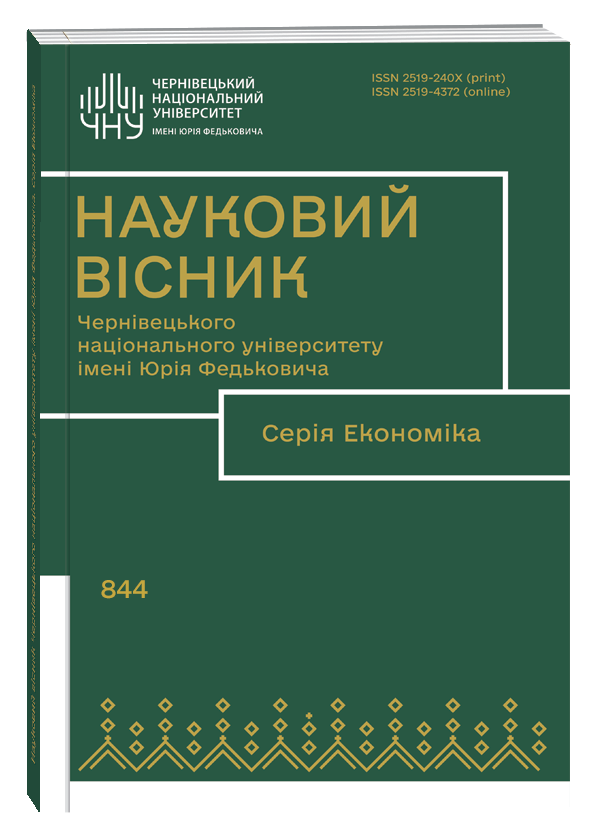ROLE OF MUSEUM DEVELOPMENT FOR CULTURAL INNOVATION
Ключові слова:
museum, Culture and InnovationАнотація
Museum development is dynamic program of society. Private or public both can change the pattern of culture. Protection of culture empowers human civilization by the system of museum development. Modern museum can be reformed via cultural innovation. The main aim of the study is to discover the role of museum development for cultural innovation. Museum and culture broadens the scope of the study. This scientific paper is based on scientific review of importance of museum development for cultural innovation. Museum development is key element for cultural innovation in every civilization. Many places of the world culture are the foundation of museum development. Cultural innovation creates smart museum development process. Variation in culture opens the way of preservation systemically. Local government plays vital role for the sustainable development of museum. Independent and private museum needs to manage with greater advancement. Globally, innovators should think about positive change in cultural practices and should make all lively in the museum. Museum may foster entrepreneurship. Modern technology means are supporting to the cultural innovation for the people. Private museum should nurture the local cultural development. Socio economic reform also can be done by museum development in the community. It is a contribution of human civilization. Generation to generation cultural innovation varies for its development. Thus, modern museum development depends on change in cultural innovation. Old and new culture may get museum sector management for information, literature, and physical structure of all cultural object, image, history, artifacts, documentation, documentary, reports and research. Cultural input can be preserved with its innovative management to contribute museum sector development.
Посилання
Ahmad, et. al (2013). Museum Learning: Using Research as Best Practice in Creating Future Museum Exhibition. Procedia - Social and Behavioral Sciences 105 pp. 370 – 382 DOI: https://doi.org/10.1016/j.sbspro.2013.11.039.
Ahmad, et. al (2018). Creating Museum Exhibition: What the public want? Asian Journal of Behavioural Studies 3(11): pp. 27-36 DOI: https://doi.org/10.21834/ajbes.v3i11.98.
Barros, A. (2016). Archives And the “Archive”: diAlogue And An AgendA of reseArch in orgAnizAtion studies. Journal of Organizações&Sociedade, 23(79) Pp. 609-623, DOI: https://doi.org/10.1590/1984-9230795
Braswell, S.G. (2012). Variations in Children's and Adults’ Engagement with Museum Artifacts. The Journal of Visitor Studies, 15(2), pp.123-135, DOI: https://doi.org/10.1080/10645578.2012.714997.
Brown, K. (2019). Museums and Local Development: AnIntroduction to Museums, Sustainability and Wellbeing. Museum International, 71 (3-4) pp. 1-13, DOI: https://doi.org/10.1080/13500775.2019.1702257.
Caswell, M. (2014). Seeing Yourself in History: Community Archives and the Fight Against Symbolic Annihilation. The Public Historian 36, pp. 26–37. https://doi.org/10.1525/tph.2014.36.4.26.
Chuan, Li &Ghirardi, S. (2019). The role of collaboration in innovation at cultural and creative organisations. The case of the museum, Museum Management and Curatorship, 34 (3), pp.273-289, DOI: https://doi.org/10.1080/09647775.2018.1520142.
DalleNogare, C., Murzyn-Kupisz, M. (2021).Do museums foster innovation through engagement with the cultural and creative industries? J Cult Econ 45, pp. 671–704. https://doi.org/10.1007/s10824-021-09418-3.
Faria, C. et.al (2015). History of Science and Science Museums: An Enriching Partnership for Elementary School Science. Science and Education, 24(7–8), pp.983–1000. https://doi.org/10.1007/s11191-015-9773-7.
Ha et al, (2014). Analysis of Form and Space Changes in Design Process of Free-form Architecture of Culture-Related Facilities in South Korea. Architectural Research 16(4) pp.157-166, DOI: https://doi.org/10.5659/AIKAR.2014.16.4.157.
Härtel, et.al (1998). SHAPE: Improving decision-making by aligning organizational characteristics with decisionmaking requirements and training employees in a metacognitive framework for decision-making and problem-solving. Training Research Journal: The science and practice of Training 4 pp. 79-101. Available: https://www.researchgate.net/publication/288894918_SHAPE_Improving_decisionmaking_by_aligning_organizational_characteristics_with_decisionmaking_requirements_and_training_employees_in_a_metacognitive_framework_for_decision-making_and_problemsolving.
Hauan, N. P., & Kolstø, S. (2014). Exhibitions as learning environments: a review of empirical research on students’ science learning at Natural History Museums, Science Museums and Science Centers. Nordic Studies in Science Education 10(1), pp.90–104. https://doi.org/10.5617/nordina.652.
Kapukotuwa, A. (2017). Museum Exhibition, interpretation and Communication Techniques. International Journal of Research in Economics and Social Sciences 7 (2) pp. 168-179Available online at: http://euroasiapub.org.
Ketelaar, E. (2008). Archives as Spaces of Memory. Journal of the Society of Archivists 29(1): pp. 9-27, DOI: https://doi.org/10.1080/00379810802499678?scroll=top&needAccess=true;
Li, C. &Sendy, G. (2019). The role of collaboration in innovation at cultural and creative organisations. The case of the museum. The Journal of Museum Management and Curatorship, 34:3, pp.273-289, DOI: https://doi.org/10.1080/09647775.2018.1520142.
Nepal, 2021
Ross, M. (2004). Interpreting the New Museology. Museum and Society, 2(2), pp.84–103, DOI: https://doi.org/10.29311/mas.v2i2.43.
Sandal, J.-U. (2019a). Museum Science and Sandal Private Museum. Retrieved from https://janusandal.no/en/museum/publications
Sandal, J.-U. (2019b). Museum Science and the Creation of Artifacts Based on the Production Function. PROBLEMS OF SCIENCE AND PRACTICE Dedicated to the Outstanding Scientist-Economist Fr. G. Lieberman Abstracts of Reports of the International Scientific-Practical Conference, pp.447–450. Retrieved from https://janusandal.no/no/museum/publications
Sandahl, J. (2019). The Museum Definition as the Backbone of ICOM. Museum International, 71(1–2), 1–9. Available at: https://scholar.google.com/scholar_lookup?title=The%20museum%20definition%20as%20the%20backbone%20of%20ICOM&journal=Museum%20International&volume=71&issue=1%E2%80%932&pages=1-9&publication_year=2019&author=Sandahl%2CJ.



